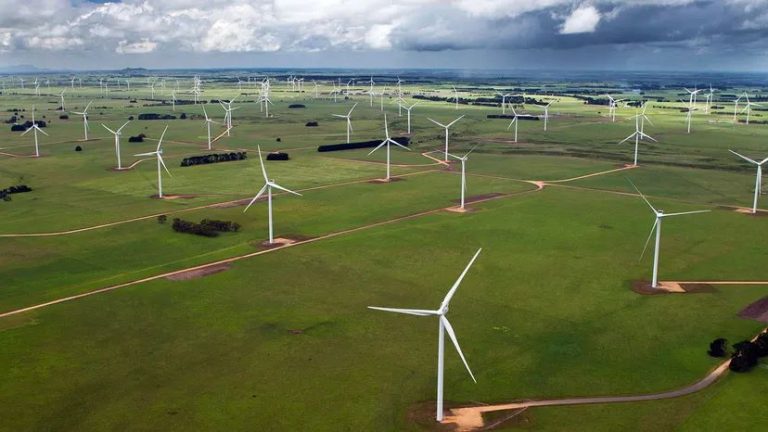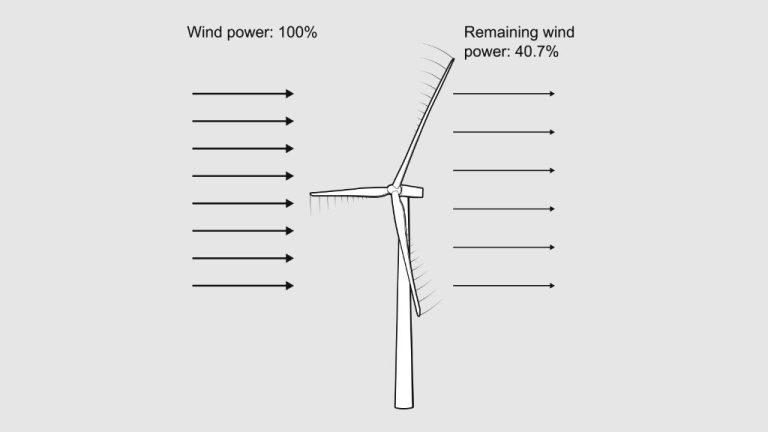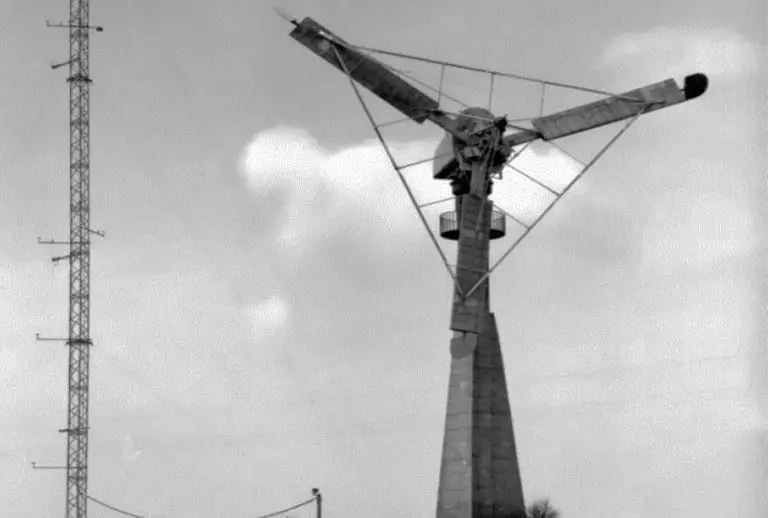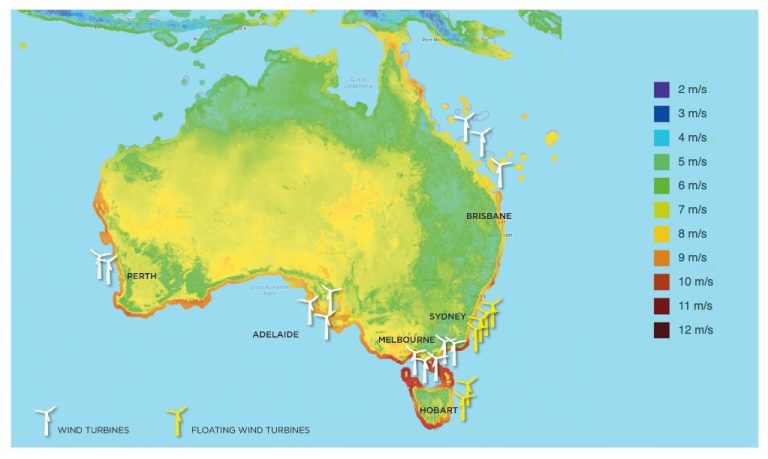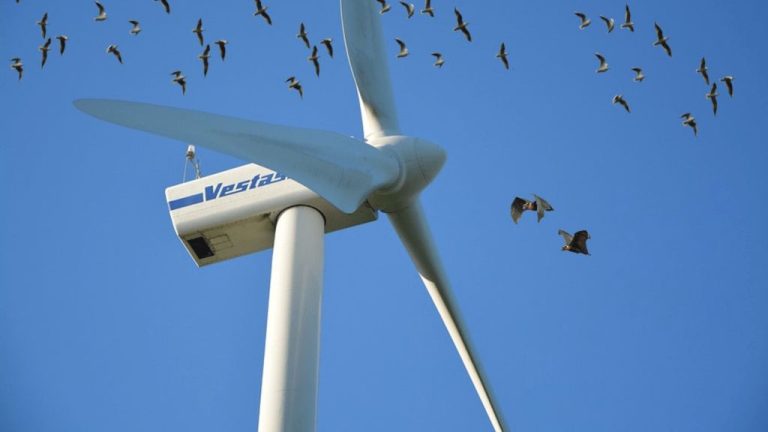Does Wind Power Work All The Time?
Wind power has experienced tremendous growth in recent years as a renewable source of electricity generation. According to the American Clean Power Association, wind power accounted for 10.1% of electricity generation in the United States in 2021, making it the largest source of renewable energy in the country. The amount of electricity generated from wind in the US has increased from about 6 billion kilowatt-hours (kWh) in 2000 to over 380 billion kWh in 2021 (EIA). Worldwide, wind power generation reached over 2100 TWh in 2022, representing a 14% increase from the previous year according to the International Energy Agency (IEA). The growth in wind power capacity and electricity generation is expected to continue as more countries turn to renewable sources to meet energy needs and address climate change.
Intermittency of Wind
Wind power output depends on wind speed, which is inherently variable and intermittent throughout the day and across seasons. Wind speeds fluctuate for a number of reasons:
- Wind speeds vary within a single day, with lower speeds typically at night and higher speeds during the day. Output can change hour by hour as wind speeds rise and fall.
- Weather patterns like storms and seasonal shifts lead to changes in wind patterns across days, weeks, and months. More wind is typically available in colder months.
- Wind output is site specific, so the profile of a region’s wind resources has a major impact. Locations with steadier wind profiles see less fluctuation.
- External factors like temperature and air density cause variation in energy production at a given wind speed.
This intermittency causes the output of a wind farm or turbine to constantly change. Periods of high winds lead to maximum production, while low wind periods see little to no generation. This variability is one of the key challenges of relying on wind power.
As noted by Wind Energy: The Facts (https://www.wind-energy-the-facts.org/understanding-variable-output-characteristics-of-wind-power-variability-and-predictability.html), “Since wind energy is a technology of variable output, it needs to be considered as just one aspect of a variable, dynamic electricity system.”
Impacts of Intermittency
One of the main challenges of intermittent renewables like wind power is that they can disrupt normal operations on the electrical grid. As this Scientific American article explains, “Intermittent renewables are challenging because they disrupt the conventional methods for planning the daily operation of the electric grid.”
Grid operators have to precisely match supply with demand at all times. With intermittent resources like wind, supply can quickly change based on wind conditions. This makes it harder to plan and dispatch other generators needed to meet demand. As one BPA report states, “Intermittent Renewable Energy…can create significant variances between planned and actual generation levels.”
Rapid changes in wind output can also threaten reliability if not properly managed. Grid operators may need to ramp up or down other generators quickly to compensate. According to the Kenan-Flagler Business School, “intermittent wind and solar power is ill-suited to meet base load power requirements.”
Wind Power When It’s Not Windy
Wind turbines do not actually need constant wind to generate electricity. When wind speeds are low, the turbines continue rotating and producing some power due to inertia from stored kinetic energy. Many wind farms are also interconnected to the larger grid system. This allows multiple wind farms to share power and smooth out variability in output. The grid connection acts as a battery, storing power from wind farms in times of high output and providing power back when needed (Source).
Modern wind turbines are designed to operate effectively even at low wind speeds. The minimum speed needed to start generating power is around 7-9 mph. At 12-13 mph of wind, most turbines reach their optimal rated power output. But even when wind speeds are under 7 mph, the turbines continue to slowly rotate and produce some electricity from residual kinetic energy (Source). This demonstrates that wind power can still be generated even when it’s not very windy.
Forecasting Wind Output
Accurate forecasting of wind speeds and resulting power output allows grid operators to schedule other electricity sources days ahead to compensate for variability in wind generation. Advanced forecasting techniques like machine learning and weather modeling can predict wind speeds up to 7 days out with decent accuracy. According to a review from the National Renewable Energy Lab, state-of-the-art forecasting in 2011 had typical errors between 10-15% root mean square error for an entire wind farm’s output (Lew, 2011). By predicting wind speeds in advance, grid operators can schedule the output of other power plants and energy storage to ensure demand is fully met when wind speeds are low.
Forecasting wind speeds allows grid operators to schedule the best mix of energy sources like natural gas, hydro, solar, and energy storage. Rather than relying on wind power in real-time, advanced notice of low wind output lets grid managers adapt. Overall, better wind forecasting directly reduces the need for expensive reserves and improves the integration of wind power into the grid.
New Storage Solutions
As wind power continues to expand, new storage technologies are being developed to capture excess wind energy that can be used when wind speeds are lower. Lithium-ion batteries have become a popular grid-scale storage option, providing fast response times and high efficiency (https://www.nrel.gov/docs/fy21osti/76097.pdf). Large-scale battery storage connected to wind farms allows excess energy to be stored and discharged when needed. For example, NextEra Energy added a 30 MW battery system to a wind farm in Oklahoma to dispatch power during peak demand periods.
Beyond lithium-ion batteries, other emerging storage technologies include compressed air energy storage, gravity storage using cranes and concrete blocks, and flow batteries using liquid electrolytes. Companies like Highview Power and Gravity Energy Storage are developing systems that can store hundreds of megawatt-hours of energy. These new storage solutions provide longer discharge times than lithium-ion batteries alone. Pairing diverse storage technologies with wind farms will enable greater flexibility and reliability as wind power expands globally (https://www.gao.gov/products/gao-23-105583).
Combining with Other Sources
Wind power can be combined with other renewable energy sources like solar and geothermal to provide a more consistent power supply. According to the United Nations, “Renewable energy sources are plentiful and all around us. Fossil fuels – coal, oil and gas – on the other hand, are non-renewable resources that take hundreds of millions of years to form naturally” (https://www.un.org/en/climatechange/what-is-renewable-energy). Combining wind with solar energy helps balance power generation since the sun often shines when the wind is not blowing. Geothermal provides a steady baseline of renewable power. According to a 2020 study, “First is the hybridization of energy sources (like solar-wind, wind-hydro, etc.) and the second is the use of spatial distribution of generators” (https://www.sciencedirect.com/science/article/pii/S0038092X19311831). By combining complementary renewable sources like wind, solar, and geothermal, utilities can provide reliable clean power even when the wind is not blowing.
Transmission Upgrades
New high-voltage transmission lines allow wind power to be transmitted over large distances, connecting windy regions with areas of high electricity demand. Building out transmission has multiple benefits.
According to the Department of Energy, “Expanding transmission also helps integrate renewable energy sources—such as wind and solar—which are increasingly cost-competitive with fossil fuels and are important for achieving a clean and resilient grid” (https://www.energy.gov/policy/queued-need-transmission).
The nonprofit Clean Energy Grid also highlights how transmission supports renewable integration and provides economic benefits: “Domestic content of transmission is high, so transmission puts Americans to work. Improved security & reliability and lower-cost energy from regions with abundant renewable resources means that the entire country benefits” (https://cleanenergygrid.org/why-transmission-matters/).
Upgraded transmission infrastructure allows wind power to be shared across wider geographical areas, reducing the impacts of intermittency and providing more reliable renewable electricity.
Demand Response
Demand response programs help better match electricity demand with the fluctuating supply from wind power. As the Energy5 blog explains, demand response allows “adjusting electricity consumption in response to fluctuations in renewable energy generation.” This makes the grid more flexible in integrating variable wind resources.
Specifically, demand response can shift energy usage to times when wind generation is plentiful. The ScienceDirect study found demand response is an “important tool as penetrations of renewables increase.” With more wind power, demand response helps maintain grid reliability and stability. Overall, demand response and wind power are complementary approaches for achieving environmental and energy goals.
Conclusion
Despite the intermittency inherent in wind power, a variety of solutions exist to enable wind to provide reliable electricity. With improved forecasting models and weather prediction technology, grid operators can better anticipate wind output. New storage technologies like grid-scale batteries can store energy for use when wind is low. Combining wind with more consistent renewables like geothermal allows the strengths of each to balance the other’s weaknesses. Transmission system upgrades allow excess electricity to be transported around the grid to areas of need. Demand response programs help shift electricity use to times of high wind production.
While no single solution solves wind intermittency entirely, using a combination of complementary approaches enables grid operators to smooth out wind’s variability. With ongoing innovation in the wind and renewable energy industry, tools will continue improving to integrate higher amounts of intermittent resources. Wind has proven able to meet a significant portion of electricity demand reliably in locations worldwide. When combined with other renewables, storage, and smart grid technologies, wind can play a major role in a clean electricity system.

